
⬆︎ My solar panels can produce, at most, a modest 150 watts of power. That’s enough to keep some deep-discharge batteries charged at all times. The solar power also is a supplement to my small generator.
Clearly the risks to the power grid are growing. This is true not just in the United States. Just two days ago, France issued a warning about winter power failure. Whether in summer or winter, power grids can become overloaded (and, these days, often do). For some strange reason, right-wing terrorists seem to be targeting the power grid. The vulnerability of the power grid to cyber-hacking is well known, though no doubt too little has been done about it. Even solar events such as coronal mass ejections could shut down the power grid and damage major components of the grid that would be very difficult to replace.
Being prepared is not necessarily just a matter of comfort and convenience. In some cases, lives depend on it. Everyone needs a plan. In rural areas such as where I live, short power outages (three or four hours) happen many times a year. I’ve never been through an outage that lasted for days, but that’s always possible.
Getting equipped with backup sources of power and heat is not necessarily something that must be done all at once. Being prepared is expensive. And not only are the things you need expensive to buy, they require maintenance, or they won’t work when you need them. Here at the abbey, I’ve gradually built up my ability to weather longer and longer power failures. Each power failure is a kind of test that lets me figure out what my next priority for improvement should be.
The first big question is: Would your heating system operate with the power down? Few systems would these days. I have a heat pump, which is of course all electric. For backup, I have a propane fireplace and a tank that holds 200 gallons of propane. The fireplace provides a helpful amount of heat, but it can’t compare with the house’s main heating system. Kerosene heaters make me nervous. But if you’re careful with them, they can be a safe source of emergency heat.
How would you cook if the power went out? Here at the abbey, though I can boil water in small quantities on generator power, my emergency solution is to cook outdoors using propane. The gas grill, also propane, is always available.
Refrigeration is a biggy. That’s a problem that can be solved only with electricity. My solution at present for refrigeration uses two battery-powered power inverters. The 1000-watt unit can run the refrigerator for five hours or more. I have two such units, so that one can be recharged from the generator while the other is powering the refrigerator.
Lighting is not a big deal. Flashlights and candles are a given, with better light sources if you have the power. You’ll also need to think about water. Even if your water is city water (as opposed to a well, which I have here), frozen pipes could be a problem in extreme cold, especially if the power is out.
For me, communication is a major issue. Cell phones aren’t enough. I also need to be able to keep my computer and WIFI running in a power failure. How I do that is shown in the photographs below. And because I’m an amateur radio operator, I also need to keep all my radios running, if they’re needed. Amateur radio operators are always about community service if a disaster strikes, not only for communication with the outside world but also for providing a means of staying in touch with one’s neighbors.

⬆︎ This small inverter generator is enough to power my refrigerator, computer, radios, and some lighting. I am wary of larger generators that cannot produce pure sine wave power.
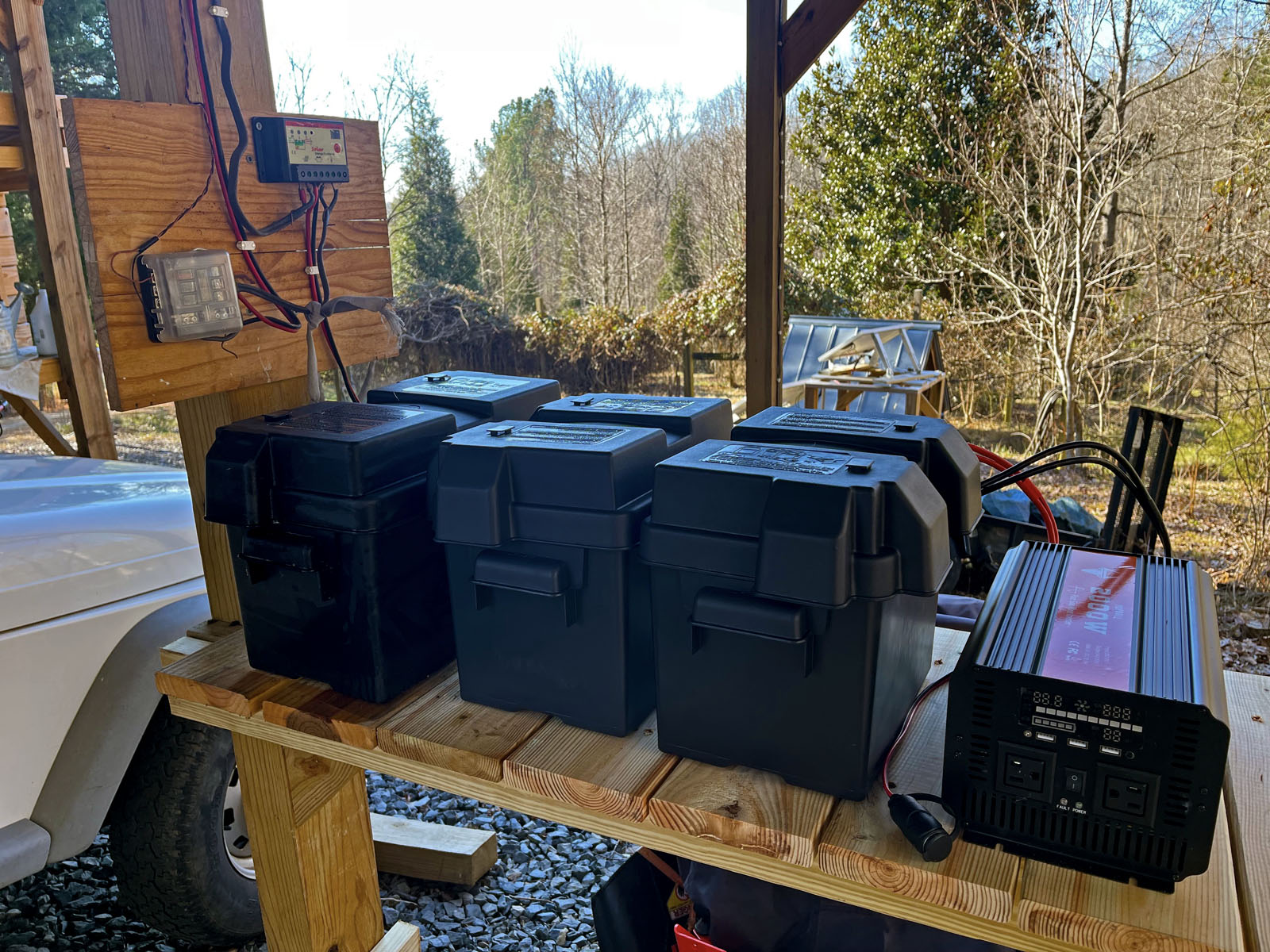
⬆︎ You can’t have too many batteries. These batteries are kept charged by the solar panels. On the right is a power inverter that attaches to the batteries. The inverter can produce standard 115-volt house current as pure sine waves. The inverter also can charge USB devices. My solar power goes into my garage, not to the house. And speaking of the garage, that’s my Jeep on the left. It, too, is a nice thing to have for winter emergencies.
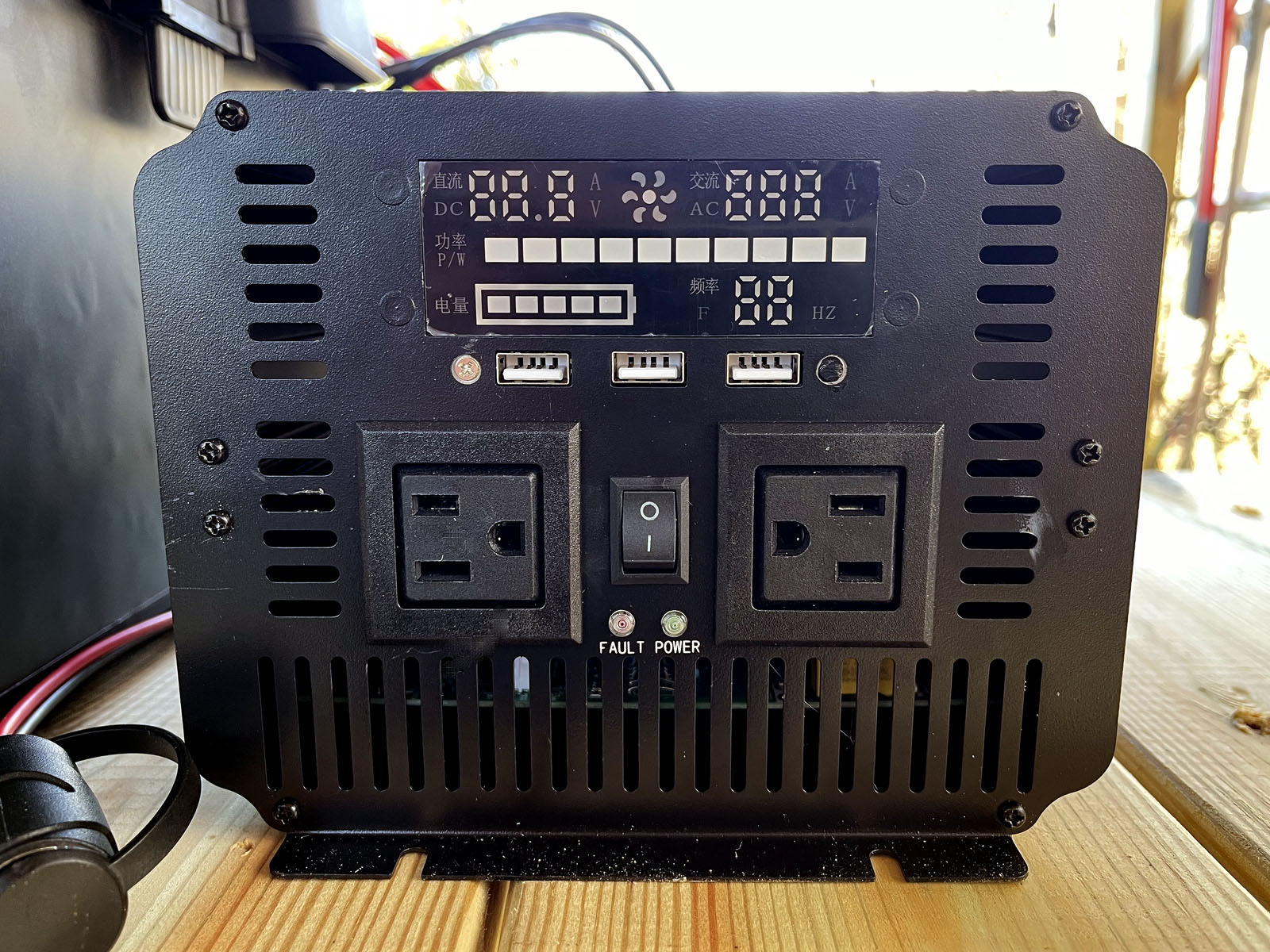
⬆︎ The front panel of the power inverter, with its three USB outlets as well as house current. These days, keeping USB devices such as phones charged is a high priority.
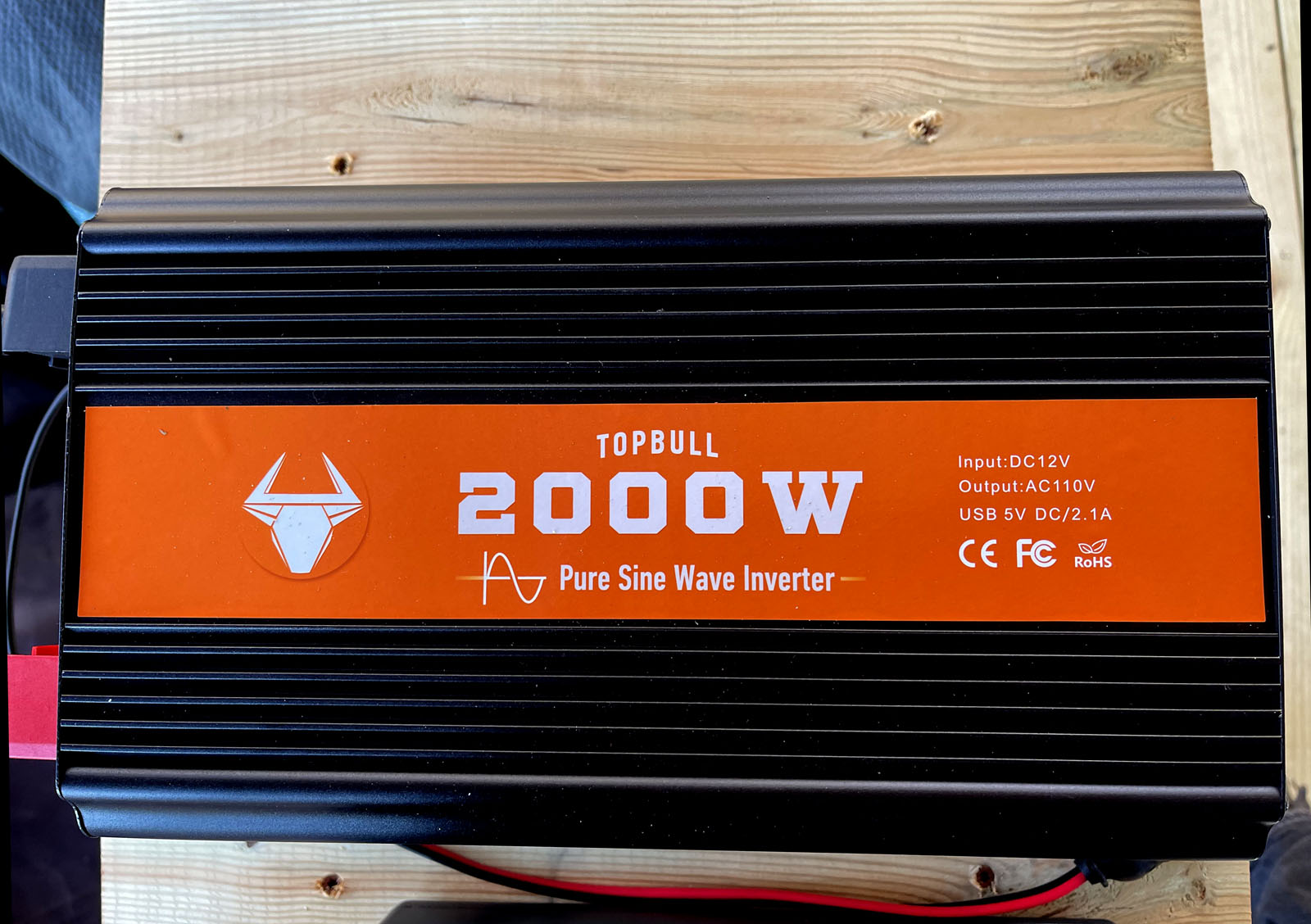
⬆︎ Fortunately, inverters like this made in China are fairly affordable. If you’re not clear on the difference between “modified sine wave” inverters and “pure sine wave” inverters, I’d recommend reading up on that. Pure sine wave inverters are more expensive, but I would not want to run electronics or expensive items such as refrigerators on dirty power.

⬆︎ These two devices contain batteries. Their output is house current and USB. They are expensive. I use these devices mainly to keep my refrigerator running — a high priority that I deem worth the expense. One can be charging while the other is powering the refrigerator. Both can be charged from my solar panels, but charging from the generator is much easier as long as the generator is running.

⬆︎ Maybe someday we’ll be able to live without gas-powered engines. But, until then, you’ve got to have fuel. I never store gasoline, kerosene, or propane indoors, and I insist on the safest possible containers.
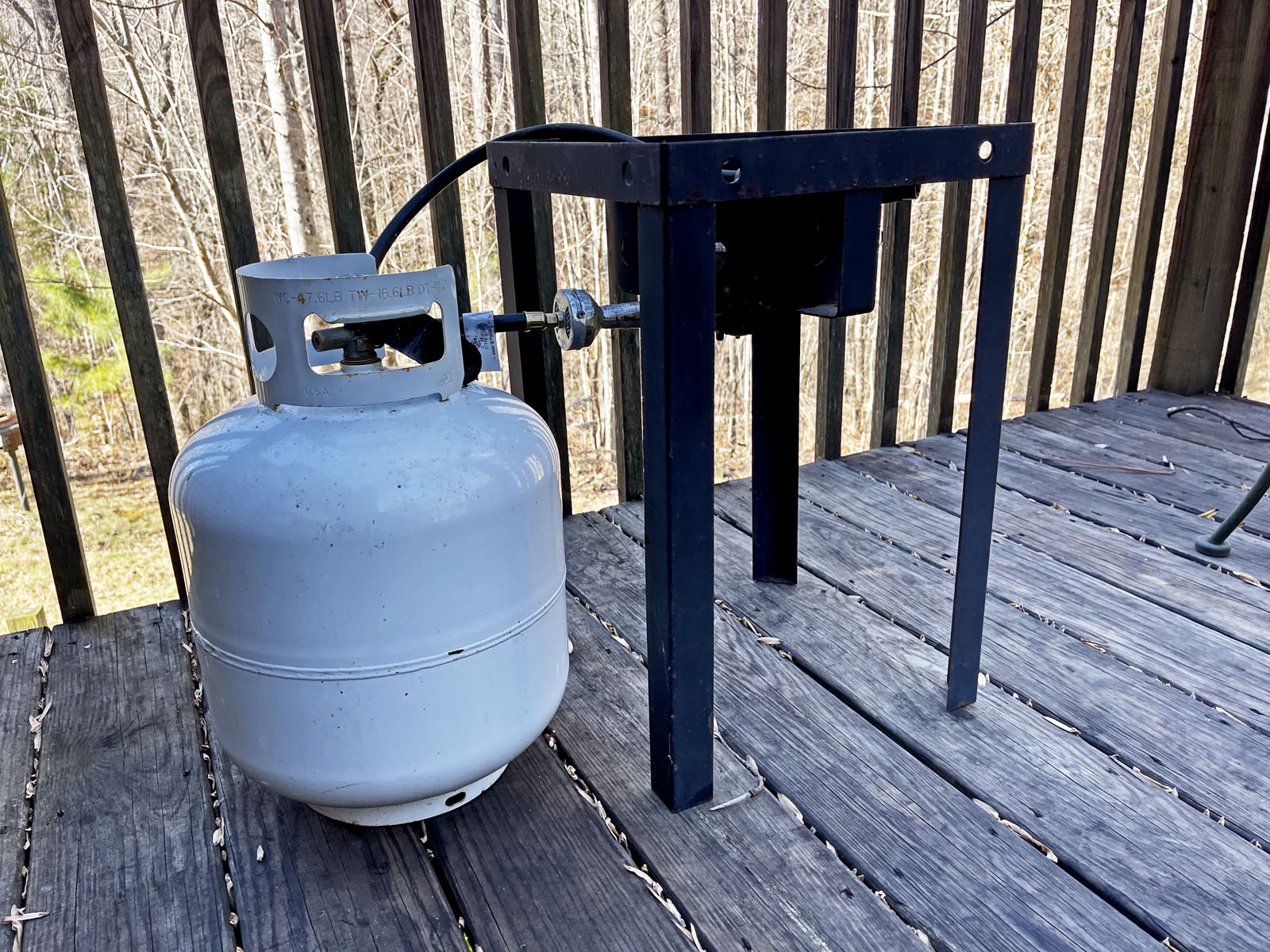
⬆︎ Propane for emergency cooking, outdoors. I also have a propane grill.
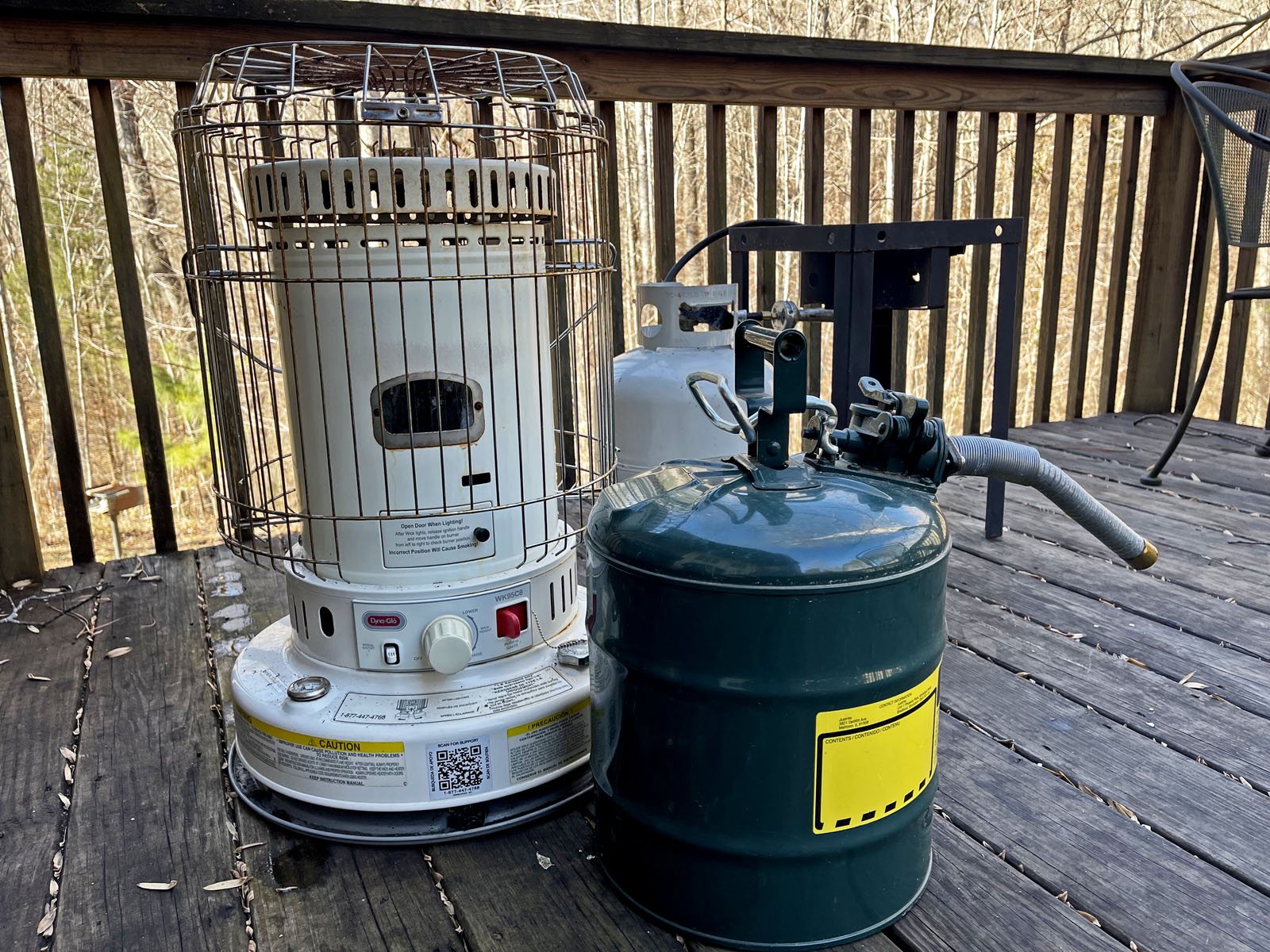
⬆︎ Kerosene heaters scare me. But they don’t scare me as much as a cold house when it’s 5F outdoors, which happened as recently as last week.

⬆︎ This uninterruptible power supply can keep my computer running for hours. But when the power goes out, I get the generator out of the basement and put it in a safe place outside the basement door. I plug the cord from the generator into a receptacle in the basement that terminates at the red outlet that you can see in the wall behind the UPS. When I built my house, I installed the wiring for that. This is a heavy commercial UPS that I’ve had for years. Its batteries have to be replaced every five years or so.
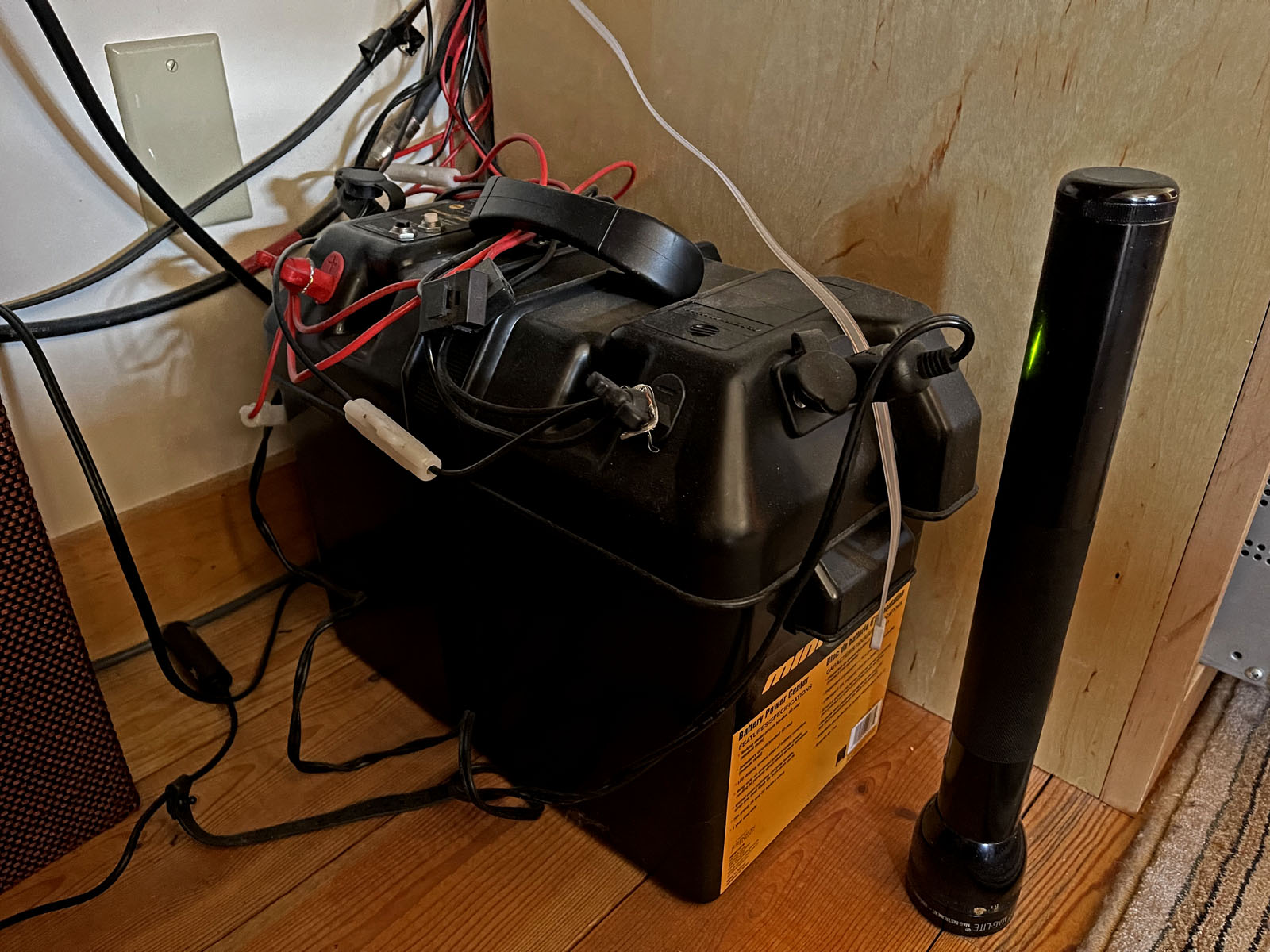
⬆︎ My radios run on battery power at all times. The batteries are kept charged by the trickle charger in the photo below. In a power failure, by moving a plug, I can keep the batteries charged with the generator.
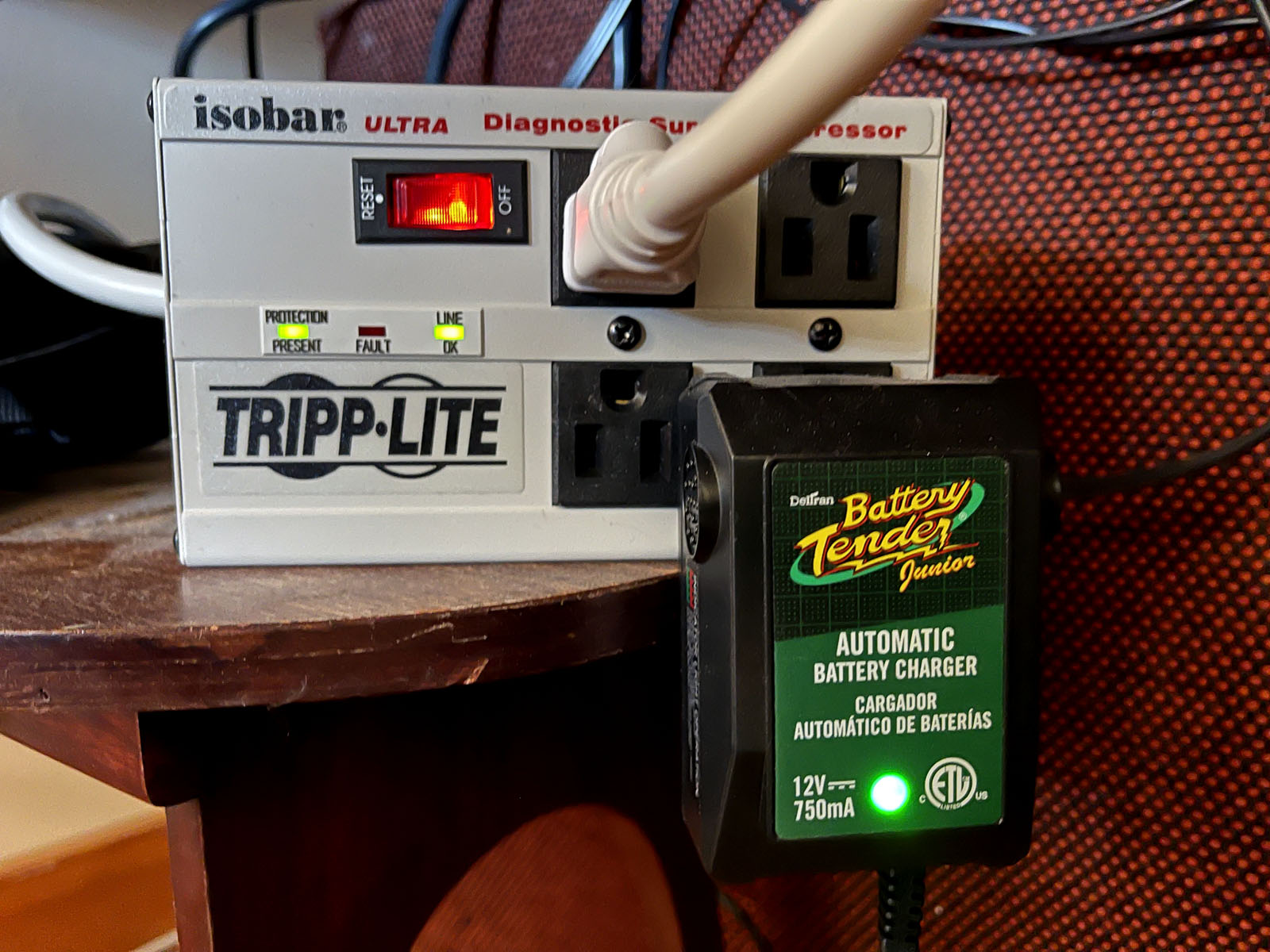
⬆︎ The trickle charger that keeps the radio batteries at full charge.
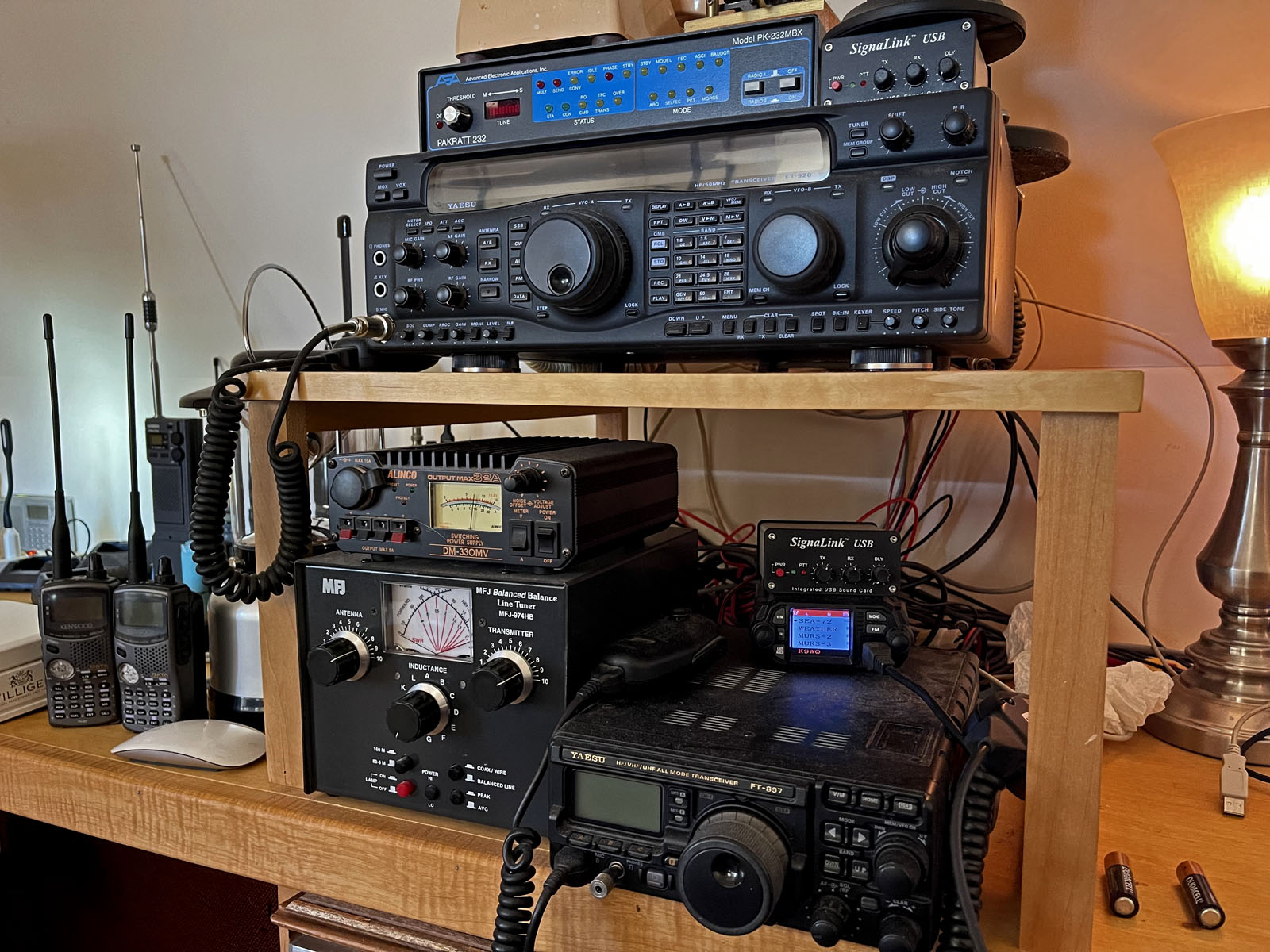
⬆︎ I sometimes joke with my neighbors that, in a catastrophe, one reason why they should keep feeding me in spite of my age is that they can count on me for communications during a catastrophe. I have had an extra-class amateur radio license for years, and I take very seriously the responsibility to provide emergency communications for the people around me, not only long-distance communications but also local communications using handhelds, of which I have a great many.














I am very impressed with your level of preparedness. There is much to be learned from it. While the area where I live does not get as cold as where you are, we occasionally see temperatures well below freezing. I noted several good points to be adapted here. Thank you.
I second JO observation.
How about Food? How are you prepared? We have lots of canned Tuna, Rice, Noodles, Sauces and Water set aside.
Hi Henry… Yep… Got lots of food… You’re having some interesting weather in California right now…